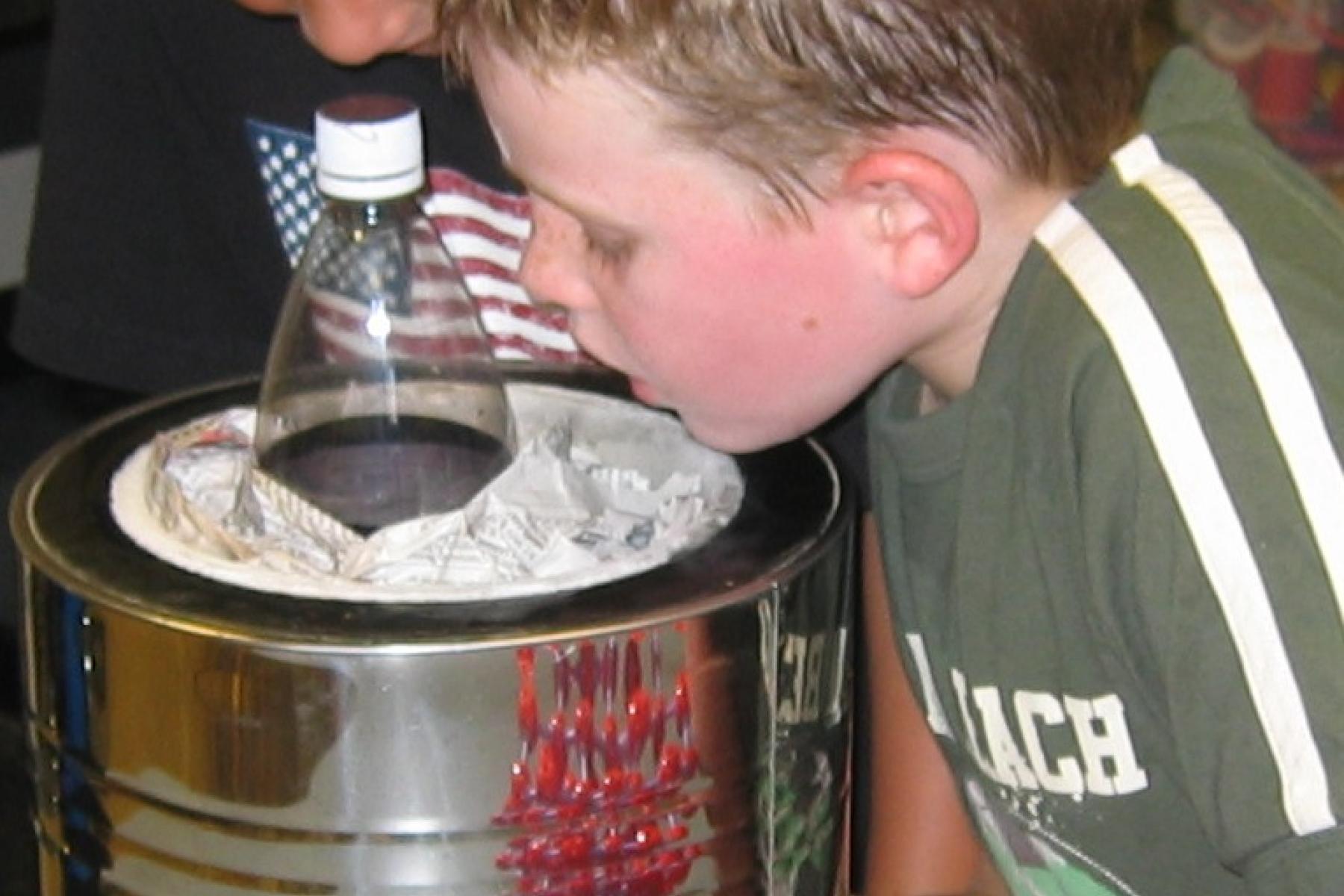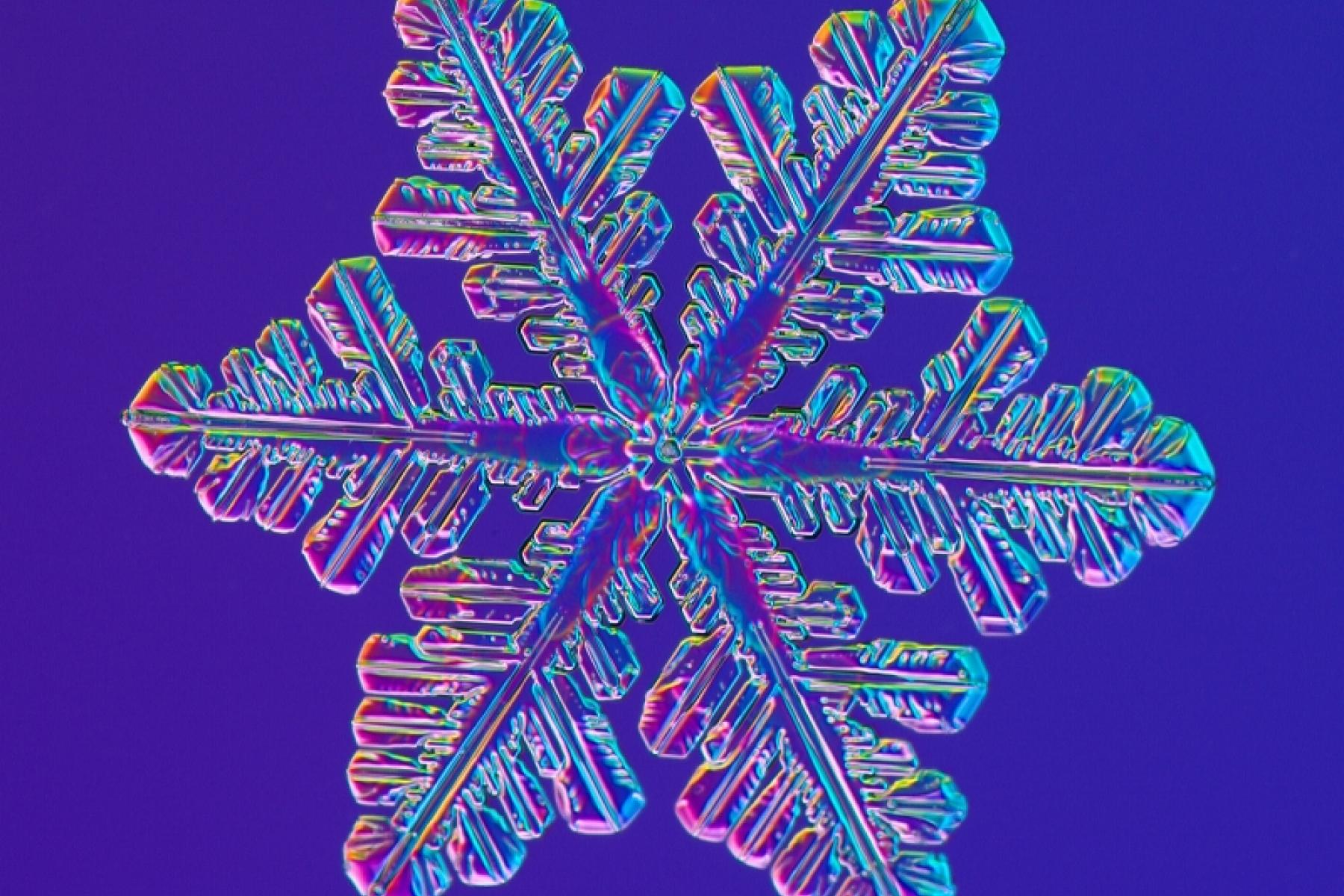DESCRIPTION
"Snowflakes" is a public presentation that introduces nanoscale science through the subject of snowflakes. Visitors learn that the complex structure of snowflakes results from the nanoscale arrangement of water molecules in an ice crystal, and that snowflakes are examples of self-assembled systems studied by nanoscientists. During the program, visitors watch videos of snowflakes growing and observe real ice crystals growing in a chilled chamber.
DESCRIPTION
"Snowflakes" is a public presentation that introduces nanoscale science through the subject of snowflakes. Visitors learn that the complex structure of snowflakes results from the nanoscale arrangement of water molecules in an ice crystal, and that snowflakes are examples of self-assembled systems studied by nanoscientists. During the program, visitors watch videos of snowflakes growing and observe real ice crystals growing in a chilled chamber.
TRAINING VIDEOS
OBJECTIVES
BIG IDEA
Snowflakes have a complex structure, determined by the nanoscale arrangement of water molecules in an ice crystal and by the specific environmental conditions under which the snowflake forms.
LEARNING GOALS
It snows when it’s cold and cloudy: the temperature is below freezing and the air is supersaturated with water vapor.
Snowflakes almost always have six sides, because ice crystals most commonly have a hexagonal structure. The macroscale structure that we can see (the snowflake) reflects the nanoscale arrangement of water molecules.
It’s true that no two snowflakes are exactly alike, but snowflakes can be classified into a number of types.
Nano is very, very small.
Nanoscientists learn about and make things that are too small to see.
Snowflakes are an example of self-assembly in nature. Self-assembly is a process by which molecules and cells form themselves into specific, ordered structures under the right conditions.
Researchers in the field of nanotechnology are studying self-assembly in order to create new materials and technologies.
Nanoscale effects occur in many places. Some are natural, everyday occurrences; others are the result of cutting-edge research.
Nanotechnology means working at small size scales, manipulating materials to exhibit new properties.
NANO CONTENT MAP
Nanometer-sized things are very small, and often behave differently than larger things do.
Scientists and engineers have formed the interdisciplinary field of nanotechnology by investigating properties and manipulating matter at the nanoscale.
Nanoscience, nanotechnology, and nanoengineering lead to new knowledge and innovations that weren't possible before.
DOWNLOAD FILES
- Snowflake lesson plan (DOC)
- Snowflake lesson plan (PDF)
- Snowflake slides (PPT)
- Snowflake Basic Shapes Template 1 of 2 (JPG)
- Snowflake Basic Shapes Template 2 of 2 (JPG)
- Snowflake Stellarplate Tactile Template 1 of 3 (JPG)
- Snowflake Stellarplate Tactile Template 2 of 3 (JPG)
- Snowflake Stellarplate Tactile Template 3 of 3 (JPG)
Credits
Sciencenter
Developed for the NISE Network with funding from the National Science Foundation under Award Numbers 0532536 and 0940143. Any opinions, findings, and conclusions or recommendations expressed in this product are those of the authors and do not necessarily reflect the views of the Foundation.
Creative Commons Attribution Non-Commercial Share Alike 3.0 United States (CC BY-NC-SA 3.0 US).
View more details

NISE Network products are developed through an iterative collaborative process that includes scientific review, peer review, and visitor evaluation in accordance with an inclusive audiences approach. Products are designed to be easily edited and adapted for different audiences under a Creative Commons Attribution Non-Commercial Share Alike license. To learn more, visit our Development Process page.


